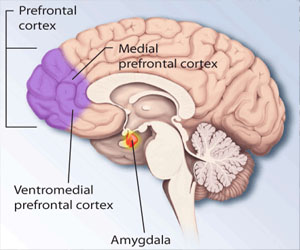Defining “Evil” is about as easy as explaining the concept of left and right; everyone knows what it is, but not how or why they know this. After six weeks of studying evil I began to think I had a decent understanding of what evil is. I thought I would be able to come up with an operational definition that I was confident in, and would use as I continued to try and understand evil.
And then the Orlando LGBTQ massacre happened.

In order to understand evil, Baumeister (1997) argues that you have to remove yourself from the perspective of the victim, and view the act from an outside perspective. Otherwise, it is impossible to view the act as anything but unexplainable and done only because the person is awful and wants others to suffer. I thought this was easy enough to do, or at least it was when reading about the Stanford Prison Experiment. But after this massacre, as a member of the LGBTQ family and as a human being, I realize just how wrong I was. As Baumeister explains,
“People tend to adapt real events to their expectations, based on the myth of pure evil. The result is a scenario involving wholly innocent, well-meaning victims attacked for no valid reason by arrogant, sadistic, out-of-control evildoers who hate peace and beauty and get pleasure from making people suffer”
(pg. 890)
How could you not want to take this as a valid explanation, and leave it at at? The victims of the massacre, and of many other evil acts, were innocent and just trying to live their lives, targeted because of their sexuality. Obviously the shooter was evil, and hated peace and beauty because he targeted those who loved differently from the “norm”.
While it may make us feel better to take this explanation as fact, ultimately it helps no one. As we’ve learned during this course, evil is not black and white, and there are so many different factors that can influence it. The main point to take away from Baumeister is that adopting the abovementioned view discourages us from seeing through to the essential nature of evil.
Evil can be influenced by empathy,desire for material gain, egotism, idealism, sadism, religion, authority, revenge, envy, power, ambiguity, lack of self control, and other factors we many not even know yet. It may be one factor or multiple in conjunction. The thing to understand is that there is no one explanation that can be applied to everyone who commits an evil act, and that we may not always know for sure what drove someone to committing evil, and that’s okay. This doesn’t mean that we stop trying to understand, but that we keep trying even more. The only way we can work to prevent evil is if we understand where it’s coming from, and work to stop it at its roots. This means teaching our future generations as well as trying to explain to the current ones that we must not view other human beings as things, no matter how different they are from us or if they have hurt us or those we love. We have to stop hiding behind excuses of religion or orders or authority as reasons for our actions. We have to understand that power can be deadly and needs to be handled responsibly and with compassion. In a world like ours, where there seems to be a new human caused tragedy every few days, it can be hard to believe that evil can ever be stopped, and I know I personally fall victim to this mindset at times. But we can’t think this way. Ultimately, what I took away from this course is that evil is a choice. And if we understand this, then it seems a lot more possible to fight it.
So, how would I define evil, now that I have spent six weeks studying it? I would say that evil is an ambiguous, vague, umbrella term that applies to any actions that harm another human being. There seem to be many explanations and none at all. But ultimately evil is something you choose to do, and something you can choose not to.
I want to leave my final post on a hopeful note, with the following quote:
“When I despair, I remember that all through history the way of truth and love have always won. There have been tyrants and murderers, and for a time, they can seem invincible, but in the end, they always fall. Think of it–always.”
― Mahatma Gandhi
References:
Baumeister, R. (1997). Evil: Inside human cruelty and violence. New York, NY: W.H. Freemand and Company.
Baron-Cohen, S. (2011). The science of evil: On empathy and the origins of cruelty. New York, NY: Basic Books.
Zimbardo, P. (2008). The Lucifer effect: Understanding how good people turn evil. New York, NY: Random House Trade Paperbacks.

